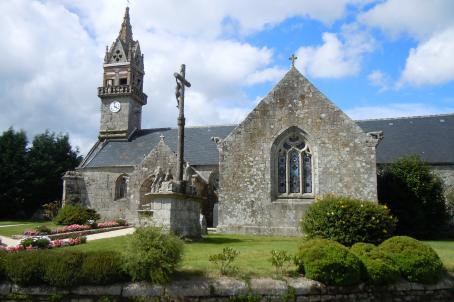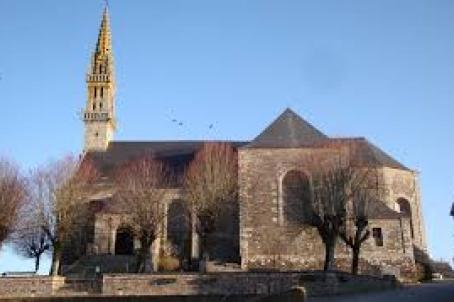Chapel of Sainte-Barbe
On the western slope of the Ellé valley, the site dominates a difference in height of about 80 metres. This particular topography, deliberately chosen, has resulted in some unusual developments: a shortened plan for the Sainte-Barbe chapel, a separate bell tower and caretaker's house arranged at a break in the slope of the plateau. This first ensemble was completed around 1700-1708 by a second chapel dedicated to Saint Michael, a bridge and stairs distributing the various terraces, and a path leading to the devotional fountain located below. This exceptional composition is related to the Baroque achievements of site development for the promenade. Here it was not only a question of discovering the landscape of the valley - which was much less wooded at the time - but also of facilitating the reception of pilgrims and the processions of the pardons.
About this building
Introduced by a flight of steps, a monumental staircase leads to the Saint-Michel oratory and then to the chapel. Inside, a stone vault on crossed ribs, an exception for the time, in the 15th century, when almost all the vaults were made of wood. The coats of arms of the Boutteville and Toulbodou, founding lords, are present on many shields of the vault, as well as on some stained glass windows. A path leads to the fountain of devotion. This fountain, dating from 1708, is set up in a square enclosure with an interior bench. A niche houses a statue of Saint Barbara. Legend has it that young unmarried girls would throw a round-headed pin into the niche and try to reach the hole in the fountain basin to find out if they would get married within the year. Continuing along the path, one reaches the banks of the Ellé River.






